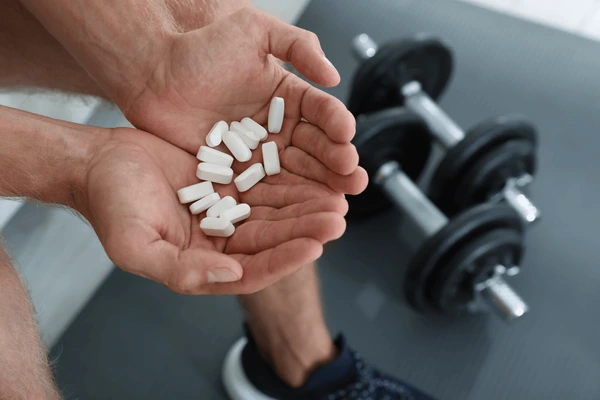Understanding Dbol and Its Legal Status
Dianabol—most of us call it Dbol—has a legendary status in bodybuilding circles. People use it to chase muscle growth and strength, but let’s be honest: figuring out if you can get it safely (or legally) depends a lot on where you live and how you go about it.
What Is Dianabol (Dbol)?
Dianabol, or methandrostenolone, first hit the scene in the late 1950s. Scientists designed it for athletes who wanted a performance edge and more muscle, and decades later, it’s still a favorite among bodybuilders who want results—fast.
You’ll spot Dianabol for sale as tiny tablets more often than not, though there are injectable forms out there. Oral tabs are pretty convenient, but don’t let that fool you; Dbol cycles are usually short because it can be rough on your liver.
Unlike your average “natural” supplement, Dbol tweaks hormone levels directly. It ramps up protein synthesis and nitrogen retention, which sets the stage for muscle gains. But there’s a flip side: water retention, high blood pressure, and liver stress aren’t uncommon.
If you’ve ever typed where to buy Dianabol tablets in USA into Google, you know there’s a flood of online sellers. The catch? Not all of them are legit, and quality is all over the map.
Legal Considerations in the USA
In the U.S., Dianabol falls under the Schedule III controlled substance category. In plain English, you can’t buy, sell, or possess it without a doctor’s prescription.
Doctors rarely write those scripts anymore, since there are safer options for most medical needs. That means most folks trying to buy Dianabol online in the States are doing it illegally.
Shipping and customs are another headache. Packages with anabolic steroids can get seized, and you could face fines or worse. Even if a website looks polished, the legal risk is real.
If you’re after performance boosts without legal drama, you’ll find plenty of legal supplements. They’re not as risky for your health or your record.
Risks of Unregulated Purchase
Buying Dbol from sketchy sources is a gamble. Most online sellers don’t show lab results, so you really have no clue what’s in those tablets.
Counterfeits are everywhere. Some fakes look convincing but can seriously mess with your health. Dosage can be all over the place, too.
There’s also the issue of your personal info. Some sites don’t bother with proper security, so your data could end up who-knows-where.
Without a doctor’s guidance, using unregulated Dbol ups your risk of liver damage, hormone chaos, and heart problems.
How to Identify Trusted Online Sources
If you’re set on buying, you’ve got to vet sellers, check their website security, and keep an eye out for red flags. It’s not paranoia—it’s just being smart.
Researching Seller Reputation
Start by checking how long a seller’s been around. A place like Steroiduck.com Online Steroids Store that’s lasted for years? That’s a better sign than a brand-new pop-up.
Dig into customer reviews. Read both the raves and the rants to see what really goes on. If people keep mentioning fast shipping or solid support, that’s a plus.
Don’t skip independent forums or bodybuilding communities. Real talk from real users beats slick marketing every time. If you see the same seller recommended in different places, that’s worth noting.
Here’s a quick checklist:
- History of operation
- Verified customer reviews
- Presence in independent forums
- Clear contact information
Mix those together, and you’ll have a clearer sense of who’s legit.
Evaluating Website Security and Authenticity
Look for HTTPS in the website address—no excuses. If it’s missing, your info’s up for grabs.
Legit sellers list a real address, email, and phone number. If you can’t find those, that’s a warning.
Professional sites usually show batch numbers, product details, maybe even lab reports. That’s what you want.
Test their customer support, too. Shoot them a question—see if they actually reply. The good ones get back to you without dodging.
Recognizing Warning Signs of Counterfeit Products
If a price seems ridiculously low, it probably is. Dirt-cheap Dbol is almost always fake or watered down.
Check the packaging. Real products have crisp labels, clear expiration dates, and manufacturer info. Blurry print or typos? Walk away.
Pay attention to customer complaints. If people mention weird side effects or sketchy packaging, don’t ignore it.
If a seller won’t show proof of authenticity—batch numbers or verification codes—move on. The best sellers are transparent.
Ensuring Product Quality and Safety
You want Dbol that’s safe and real, not some random powder pressed into a pill. Labels, ingredients, and independent testing all matter here.
Verifying Product Labels and Certifications
Always check the label first. You should see the manufacturer, batch number, expiration date, and dosage strength. If anything’s missing or looks off, be skeptical.
Look for certifications, like Good Manufacturing Practices (GMP). If a seller can prove their product meets these standards, that’s a big green flag.
Compare the label to official info from trusted sources. If something doesn’t match or the label is full of vague language, it’s probably not legit.
Keep this checklist handy:
- Manufacturer name is clear and real
- Batch/lot number is there
- Expiration date is readable
- Certification mark (like GMP) is present
Understanding Ingredients and Dosage
Read the ingredient list. Real Dianabol tablets will say methandrostenolone and list any fillers. If it’s just “proprietary blend” or unclear, that’s sketchy.
Dosage matters. Most tabs are 5 mg, 10 mg, or 25 mg. Knowing what you’re taking means you can actually control your intake.
Skip anything that hides behind vague terms. You deserve to know what’s in your supplement.
Here’s a quick breakdown:
| Tablet Strength | Common Use Case | Notes |
| 5 mg | Beginners | Easy to fine-tune dosage |
| 10 mg | Intermediate | Most popular strength |
| 25 mg | Advanced users | Needs careful monitoring |
Assessing Third-Party Testing and Transparency
Look for independent lab tests. Third-party reports prove what’s in the tablet and that it’s clean.
Sellers who post lab reports or certificates of analysis are way more trustworthy. These documents should show the amount of active ingredient, purity, and any contaminants.
If a seller won’t share this info, that’s a problem. Reliable ones usually have it right on the website or will send it if you ask.
Check for:
- Active ingredient concentration matches the label
- Purity levels are safe
- No dangerous stuff like heavy metals or bacteria
Comparing Prices and Payment Methods
Don’t just jump at the first price you see. Compare costs and make sure your payment method is safe. Both matter if you want to avoid getting ripped off.
Analyzing Price Differences Across Platforms
Prices can swing wildly depending on where you look and what you’re actually getting. Super-low prices almost always mean trouble.
Always compare a few sites before you buy. Here’s a sample price table:
| Platform | Price per 100 tabs | Shipping | Notes |
| Site A | $65 | Free | Verified seller |
| Site B | $50 | $15 | Few reviews |
| Site C | $80 | $10 | Slow delivery |
Bulk discounts can be real, but sometimes they’re just a gimmick. Do the math before you commit.
Safe and Secure Payment Options
How you pay is just as important as what you buy. Credit cards and PayPal offer buyer protection—if something goes wrong, you’ve got some backup.
Bank transfers or crypto? They’re private, sure, but if you get scammed, you’re out of luck.
Stick to sellers with encrypted checkout and recognizable payment logos. If the only options are sketchy wire transfers, that’s a red flag.
Check the refund and return policies for your payment method, too. It’s not paranoid—it’s just smart shopping.
Tips for a Confident Buying Experience
Want to feel good about your purchase? Trust real user stories and keep up with changing regulations. It’s not just about the product—it’s about the whole process.
Reading and Interpreting Customer Feedback
Customer reviews are gold. Don’t just count stars—read what people actually say. Look for patterns: repeated complaints about shipping or consistent praise for quality.
Distinguish verified purchases from the rest. Verified reviews carry more weight since they’re from actual buyers.
Check review dates. Newer feedback is more useful, since sellers can change over time.
Try organizing what you find:
| Feedback Type | What to Look For | Why It Matters |
| Positive | Consistent quality praise | Shows reliability |
| Negative | Repeated shipping/refund complaints | Reveals weak points |
| Neutral | Balanced pros and cons | Offers realistic view |
Balancing all sides helps you avoid being swayed by a handful of extreme opinions. The more you know, the better your odds of a smart, safe buy.
Staying Informed on Updates and Regulations
Rules around supplements and performance enhancers change fast. If you’re serious about bodybuilding, you’ve probably noticed how often the landscape shifts.
It makes sense to check for updates from health authorities or fitness organizations before buying anything. Nobody wants to get caught off guard by a new ban or restriction.
Government websites usually post clear updates on what’s allowed and what’s off-limits. Honestly, it’s way more reliable than whatever you’ll find in random forums or on social media.
Signing up for alerts from trusted health and fitness news outlets isn’t a bad idea either. These updates can flag new restrictions, safety warnings, or even those sudden product recalls that seem to pop up out of nowhere.
Tracking regulations might feel tedious, but it’s how we avoid legal headaches and keep our supplement stack safe. At the end of the day, knowing the rules means you can train and compete with fewer worries.





























